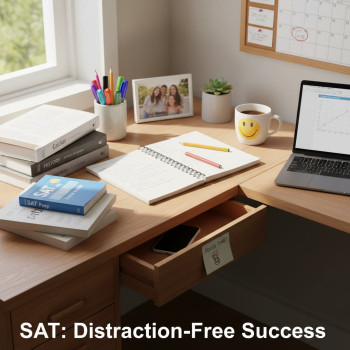Why Concordance Charts Make Parents Nervous (And Why That’s Okay)
When your teenager hands you a printout and says, “Look — this chart says a 28 on the ACT is a 1340 on the SAT,” it’s easy to spring into action. You imagine colleges, scholarships, and the next steps in the application marathon. Concordance charts feel like maps to a new territory — but many parents treat them like treasure maps with an X that guarantees college acceptance.
Let’s take a breath together. Concordance charts are helpful tools, but they’re not destiny. They’re statistical bridges that let admissions officers and families compare scores from different tests. Read correctly, they help you set goals and understand options. Read like a headline, they can mislead.
Quick reality check:
- Concorded scores are estimates, not exact equivalents.
- They describe group-level relationships (how students who score similarly tend to rank), not perfect one-to-one swaps.
- Admissions decisions depend on the whole application — grades, essays, activities, recommendations, and yes, context.

What Concordance Charts Actually Show (So You Stop Treating Them Like Magic)
At their core, concordance charts are built from large groups of students who took both tests within a certain timeframe. Statisticians analyze how scores align across the two tests and build tables that let you say, “On average, this ACT score corresponds to this SAT score.” Important detail: that “on average” is about rank within the testing population, not an absolute guarantee.
Concrete ways concordance charts are useful
- They help colleges equate applicants who submitted different tests.
- They let students and families set target scores when switching from one test to another.
- Admissions counselors use them when reporting trends or creating dual-test policies.
And where they fall short
- They can’t predict how an individual student will perform after switching tests.
- They shouldn’t be used to convert averages or group-level statistics (like class means).
- They don’t replace holistic review; they’re just one data point.
Common Parent Mistakes (And How to Avoid Them)
Parents are advocates by instinct. That’s a strength. But advocacy can morph into pressure if we misinterpret data. Here are the most common mistakes I see — and simple corrections that will keep the process healthy for both you and your student.
Mistake 1: Treating a concorded score as a guaranteed equivalence
Why it happens: Charts often present a neat number (e.g., ACT 30 → SAT 1420), so it feels definitive. The truth: it’s a statistical average.
What to do instead: Use concordance to set a target range, not a single goal. Encourage your student to aim for a score range that reflects both ambition and realistic practice results.
Mistake 2: Averaging concorded scores for groups
Example error: Converting a classroom average ACT 24 into an SAT average by plugging every student’s score into the chart and averaging the results. Concordance tables weren’t designed for that.
What to do instead: If you need group-level comparisons (for school reports or scholarship pools), consult with a counselor or use professional statistical guidance rather than casual conversions.
Mistake 3: Ignoring differences in test format and timing
The Digital SAT introduced changes: adaptive question ordering, device-based test delivery, and slightly different timing and question types. Two students with similar abilities might prefer one format to the other, which affects their scores.
What to do instead: Think about test fit. If your child performs better with digital interfaces or prefers fewer multiple-choice traps, that matters more than a single concorded number.
Practical Steps Parents Can Take to Use Concordance Charts Wisely
Here’s a short, actionable checklist you can use the moment a concordance chart enters the conversation.
- Read the fine print: Look for the date and the population the chart used. Concordance tables evolve as tests change.
- Set a target range (e.g., 1360–1420) rather than a single “must hit” number.
- Consider multiple measures: GPA, course rigor, teacher recs, and portfolio work where relevant.
- Talk to the colleges on your list — ask admissions or check their published policies about test scores and superscoring.
- Make a personalized plan: If your student prefers the ACT or Digital SAT, tailor practice to that format rather than rigidly chasing converted scores.
When to treat a concorded score as a strong signal
If your student takes both tests and their scores are consistent with the concorded equivalence, that’s useful confirmation. For example, if a student scores an ACT 32 and an SAT 1480 after both tests, the concordance is supported by their actual performance. In that case, it’s reasonable to treat the two results as comparable signals.
How to Read a Concordance Table Like a Pro
Here’s a simple, non-technical walkthrough. Imagine the table lists ACT composite scores down the left side and corresponding SAT total scores across the row.
- Find the student’s ACT composite score.
- Read across to see the concorded SAT total.
- Remember the concorded score is best viewed as the midpoint of a likely range; there’s typically variability above and below that number.
Example table: How to interpret it
| ACT Composite | Concorded SAT Total (Typical) | How to Use It |
|---|---|---|
| 24 | 1100 | Set a target SAT practice range 1040–1160; identify weaknesses in either Evidence-Based Reading or Math. |
| 28 | 1250 | Look at question-level diagnostics; a small improvement could push college options forward. |
| 32 | 1420 | Consider stretch goals for scholarship eligibility and encourage timed practice. |
Note: The numbers above are illustrative. The exact conversion can vary based on the concordance table used and the testing era.
Real-World Context: Admissions, Superscoring, and Policies
Colleges differ in how they treat test scores. Some superscore (combine best section scores across multiple sittings), some consider the highest single test, and others are test-optional or test-blind for certain cycles. That institutional nuance matters a lot more than the fine difference between concorded numbers.
Questions to ask on your college list
- Does this college superscore the SAT or ACT?
- Is the college test-optional for the current admission cycle?
- How does the college treat test scores in combination with GPA and course rigor?
If you don’t want to call admissions, many schools publish score-use policies on their websites or in their admission PDFs. Knowing each college’s policy lets you decide whether to retake a test or to focus time elsewhere (like essays or extracurricular evidence).
How Parents Can Support Motivation — Not Pressure
One of the most important roles you play is emotional scaffolding. High stakes testing can strain a teenager’s motivation and mental health. Your job is to help them plan thoughtfully and stay resilient.
Tips to keep prep healthy
- Celebrate incremental gains: improved timed sections, better focus on practice days, and consistent study beats occasional marathon sessions.
- Make rest non-negotiable: sleep and breaks matter for test performance more than last-minute cramming.
- Use practice scores to guide prep: if practice SATs show steady improvement, that’s often a better sign than a single official score.
- Frame retakes as experiments. Each test gives feedback — not final judgement.
When Personalized Help Makes a Difference
General advice and charts only go so far. Students thrive when preparation is tailored to how they learn. Sparkl’s personalized tutoring, for example, offers 1-on-1 guidance, tailored study plans, expert tutors, and AI-driven insights to help students focus on the exact skills that will move their scores. When used naturally — to target weaknesses revealed by diagnostic testing — smart tutoring accelerates progress without turning prep into a pressure cooker.
How a tailored approach helps with concordance confusion
- Diagnostics show whether the student’s performance profile matches the assumptions behind concordance (e.g., are reading and math skills balanced?).
- A tutor can simulate both tests when needed, producing real data rather than relying solely on conversions.
- Personalized pacing prevents spending time on already-strong areas and focuses on the skills that will have the biggest score impact.

Case Studies: Two Students, One Concordance Chart, Different Paths
Real examples help ground abstract ideas. The names and details are fictional, but the situations are common.
Case A: Mia — The Strategist
Mia scored a 29 on the ACT (concorded to roughly the mid-1200s on the SAT). She’s a strong reader but gets nervous on timed math. Her school uses superscoring. Mia and her parents used the concordance as a planning tool: they decided she’d focus on the Digital SAT because the adaptive format and on-screen calculator fit her strengths. After a tailored study plan and targeted math practice, she boosted her SAT math sectional score by 70 points and submitted a superscored SAT result that strengthened her application.
Case B: Jordan — The Balanced Improver
Jordan earned a 24 on the ACT (concorded around the 1100 range). He has consistent grades and strong extracurriculars. Instead of chasing an exact concorded SAT number, Jordan’s family chose to invest in one-on-one tutoring to shore up weak areas, focus on timed strategies, and practice the digital interface. After two months, his practice SATs rose into the 1180–1220 range, giving him both confidence and more scholarship options.
How to Talk About Scores with Your Teen Without Creating Drama
Conversation style matters. The same data can motivate or demoralize depending on tone. Try these communication moves:
- Ask before advising. “How do you feel about the test?” invites dialogue.
- Be specific. Praise the behaviors you want to see (consistent practice, reviewing errors), not just the numbers.
- Use data for planning, not punishment. If practice shows a pattern, make a plan; don’t assign blame.
Checklist: What to Do When You See a Concordance Chart
Keep this checklist handy the next time a conversion table enters the conversation:
- Check the source and date of the chart. Are you looking at a recent table that reflects the current test formats?
- Ask whether the college superscores or has a test-optional policy.
- Use the chart to create a target score range, not a single number.
- Look at practice-test trends to confirm whether the concorded target is realistic for your student.
- Consider a short-term tutoring plan if diagnostic practice reveals persistent gaps — personalized help often produces the clearest improvement.
What Parents Should Know About the Latest Test Changes
The testing landscape has shifted in recent years: many programs moved to digital delivery, timing rules changed, and testing options expanded. Because concordance tables are built from historical student data, they may be periodically updated to reflect those changes. That’s why it’s important to make sure you’re consulting the most recent guidance when you use a chart for decisions.
Bottom line:
Concordance charts remain valuable — when used as the informed tool they were designed to be. They’re a piece of the admissions puzzle, not the whole picture.
Final Thoughts: Keep Calm, Keep Context in Mind
Data are friends when they help you make decisions; they’re foes when they create stories that aren’t true. Concordance charts are useful friends: they guide, they suggest, and they compare. But they don’t know your child’s work ethic, classroom context, or the nuance in their application essays.
As a parent, your role is to provide steady support, ask the right questions, and help your student turn numbers into a healthy, targeted plan. If that plan includes expert help, look for personalized, diagnostic-driven tutoring that respects your student’s strengths — a human-first approach that might include thoughtful tools like Sparkl’s personalized tutoring, which pairs 1-on-1 instruction with data-driven insights to help students improve efficiently and confidently.
One last practical mantra to share with your teen:
“Scores are signals, not sentences.” Use them to guide work, not to define worth.
Appendix: Quick Reference Table for Parents (How to Use Concordance in Three Steps)
| Step | Action | Why It Helps |
|---|---|---|
| 1 | Confirm the concordance source and date. | Ensures you’re using a table that reflects current test formats and populations. |
| 2 | Translate the score into a target range rather than a single point. | Reduces pressure and creates flexible goals that reflect reality. |
| 3 | Combine concorded targets with practice-test trends and holistic application factors. | Leads to better decisions about retakes, tutoring, and time allocation. |
Armed with a clear understanding of what concordance charts mean — and what they don’t — you and your student can move forward with confidence. Keep the conversation open, use the data thoughtfully, and remember that targeted help and steady habits make the biggest difference over time.
If you’d like help turning your student’s practice-score trends into a focused study plan, consider a short diagnostic and a personalized plan. The right plan will respect your teen’s pace, target the highest-leverage skills, and keep the whole process sustainable and supportive.














No Comments
Leave a comment Cancel